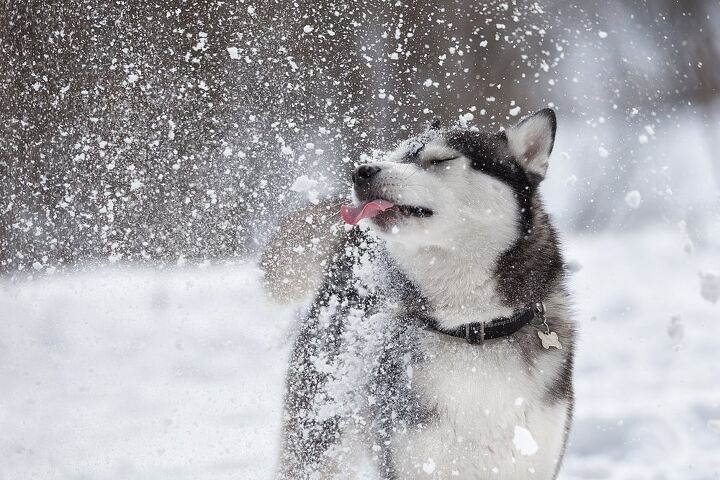How Cold is Too Cold for My Dog to Be Outside?

You might enjoy the magic of wintertime, but that doesn’t mean that your pooch shares your enthusiasm for cold weather – or the situation might be the exact opposite, with your four-legged bestie enjoying snowfall and you dreading the icy temperatures. Either way, you might be wondering if your pet needs some extra protection or different routines during winter – after all, some dogs are less suited for cold than others.
So, it begs the question how cold is too cold for your dog, and should you even try going outside in these cases? There are several precautions you can take, but sometimes, you should be wary of extreme temperatures. Let’s delve deeper and learn more.
How Cold is Too Cold for My Dog to Be Outside?
The tolerance to cold weather can vary among individual dogs based on factors such as breed, size, coat type, age, and overall health. Generally, most dogs can tolerate cold weather to some extent, but there are certain conditions and temperatures where it becomes unsafe for them to be outside for extended periods. Of course, there will be some telltale signs that it’s just too cold to be outside. Signs that your dog may be too cold include shivering, whining, seeking shelter, lifting paws off the ground, or exhibiting signs of discomfort. If you notice any of these signs, it's time to bring your dog inside for some much-needed warmth.
Of course, it’s essential to use your judgment and consider your dog's individual needs – you should always prioritize your dog's well-being in extreme weather conditions, but that will differ from dog to dog and climate to climate. Even so, there are some general guidelines for determining if it’s too cold outside for your pet – here’s what you need to know before taking them outside in really cold weather.
- Consider their coat length and breed:
In winter, your pet’s coat can be a determining factor for outside time. Dogs with thick or double coats, such as Siberian Huskies or Alaskan Malamutes, may be more tolerant of cold temperatures than those with short coats, like Chihuahuas or Greyhounds. Some dogs were specially bred for living and working in cold environments, while some breeds were developed for completely opposite conditions. If your pet belongs to the latter group, it might be useful to invest in a warm coat designed to keep your dog toasty and warm during cold weather.
- Don’t be caught off-guard by the icy winds:
Wind can make the temperature feel colder. Pay attention to the wind chill factor, as it can affect your dog's ability to stay warm. It might seem like decent enough weather outside when you look at the temperature on the weather app, but the biting wind can make everything much worse.
- Consider the age and health of your pet:
Puppies, senior dogs, and those with health issues may be more sensitive to extreme temperatures. Always keep this in mind when determining if it’s too cold for your pet to be outside.
- Consider the duration of your outdoor stay:
It’s not the same if you’re just popping out for your pooch to pee or if you’re planning to go exploring the outdoors – most dogs will be fine if it’s 15 to 20 minutes outside but if it’s for a longer period of time, you’ll have to adjust accordingly. Always monitor your dog closely and bring them inside if they show signs of discomfort.
– Keep track of the temperature outside:
As a general rule, if the temperature drops below freezing (32°F or 0°C), you should be cautious. Smaller or short-haired dogs may need protection even when the temperature outside is a few degrees higher than that, too. Frost, ice, blizzards, or just heavy snowfall – these are not the ideal conditions for frolicking outside. Even if you have to go out just for a couple of minutes for a potty break, your pooch might need some extra gear to stay safe and comfy – eg special dog shoes for snow.
In the end, as winter settles in, remember to prioritize your dog's well-being in the cold. Pay attention to signs of discomfort and adjust outdoor activities accordingly. Each dog is unique, so tailor your care to their individual needs. And if the weather does not permit long walks or playtime, then just go for a quick potty break and then back inside for warmth and snoozing!

A proud mama to seven dogs and ten cats, Angela spends her days writing for her fellow pet parents and pampering her furballs, all of whom are rescues. When she's not gushing over her adorable cats or playing with her dogs, she can be found curled up with a good fantasy book.
More by Angela Vuckovic

























